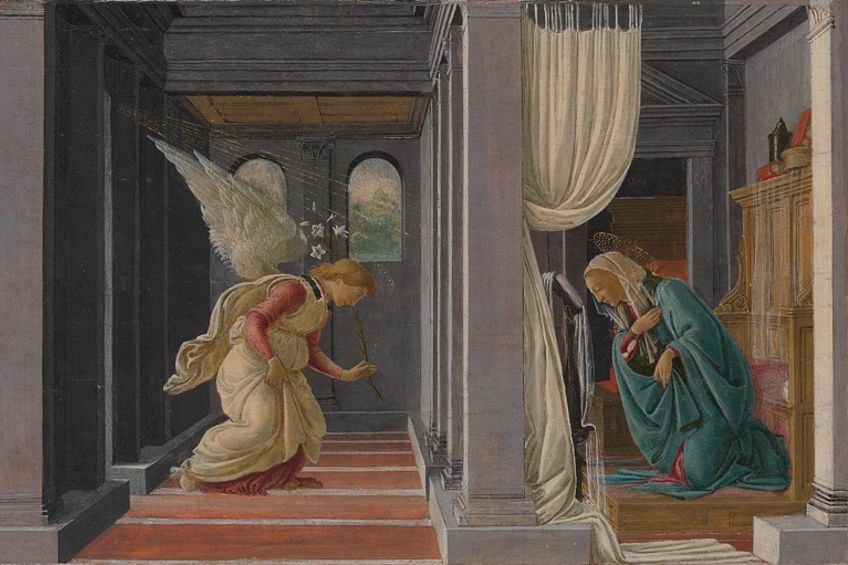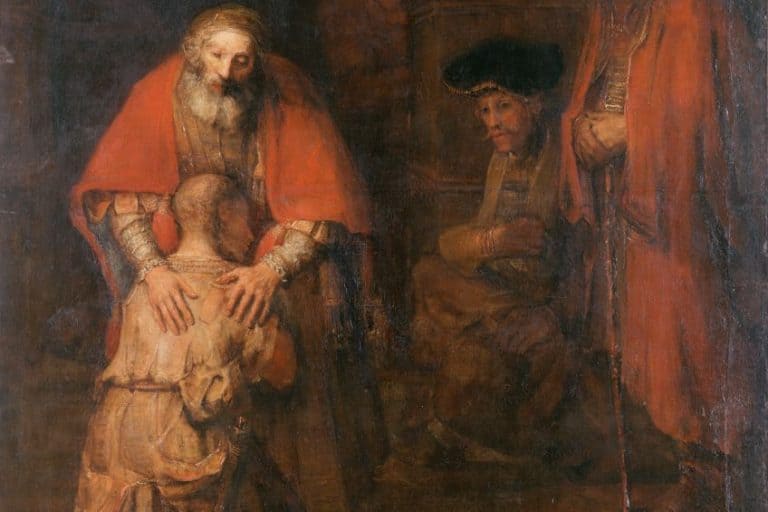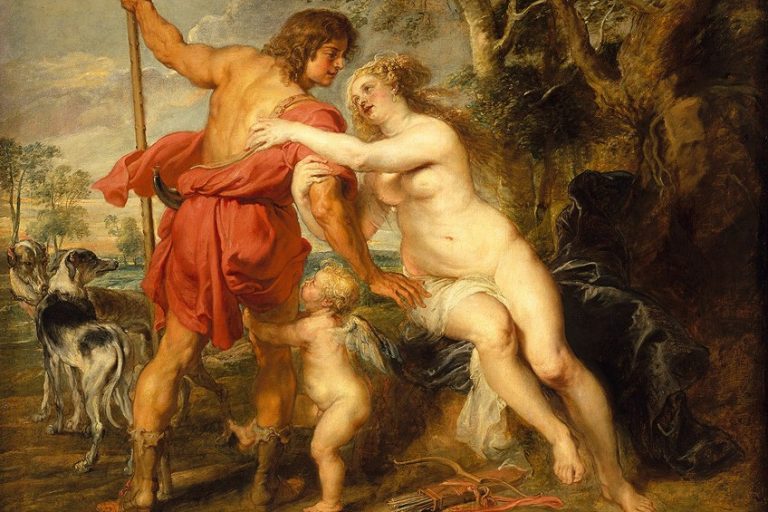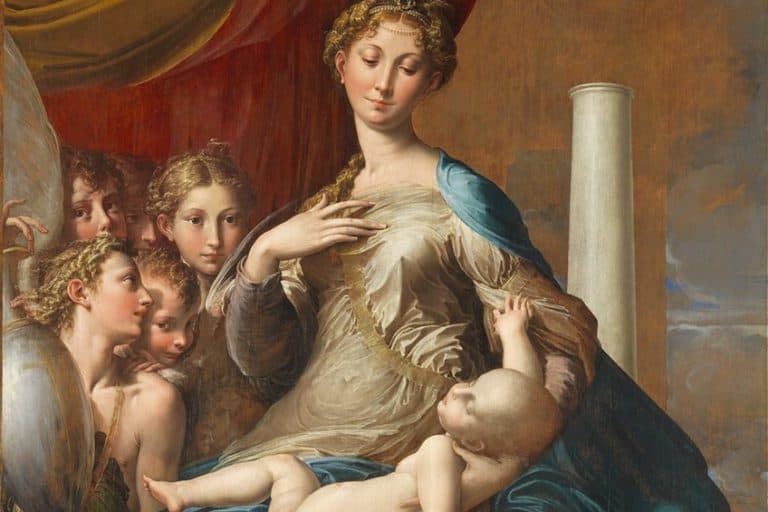Sandro Botticelli Paintings – The Famous Renaissance Artist
Sandro Botticelli, an illustrious figure of the Italian Renaissance, still mesmerizes viewers across generations with his enduring works of art. Known for his meticulous attention to detail and profound symbolism, Botticelli’s paintings convey a rich tapestry of mythological narratives, religious themes, and portraiture. In this article, we delve into the essence of Botticelli’s genius by exploring his top 10 paintings, each a testament to his unparalleled skill and enduring legacy in the annals of art history. From the ethereal beauty of The Birth of Venus to the profound allegory of Primavera, join us on a journey through Botticelli’s most iconic works and uncover the depths of his artistic vision!
Top 10 Paintings by Sandro Botticelli
Sandro Botticelli is famed for his intricate mythological and religious paintings. His extensive body of work reflects meticulous detail and profound artistic insight. Below, we’ve curated 10 of his seminal pieces, offering a glimpse into Botticelli’s enduring legacy and artistic brilliance.
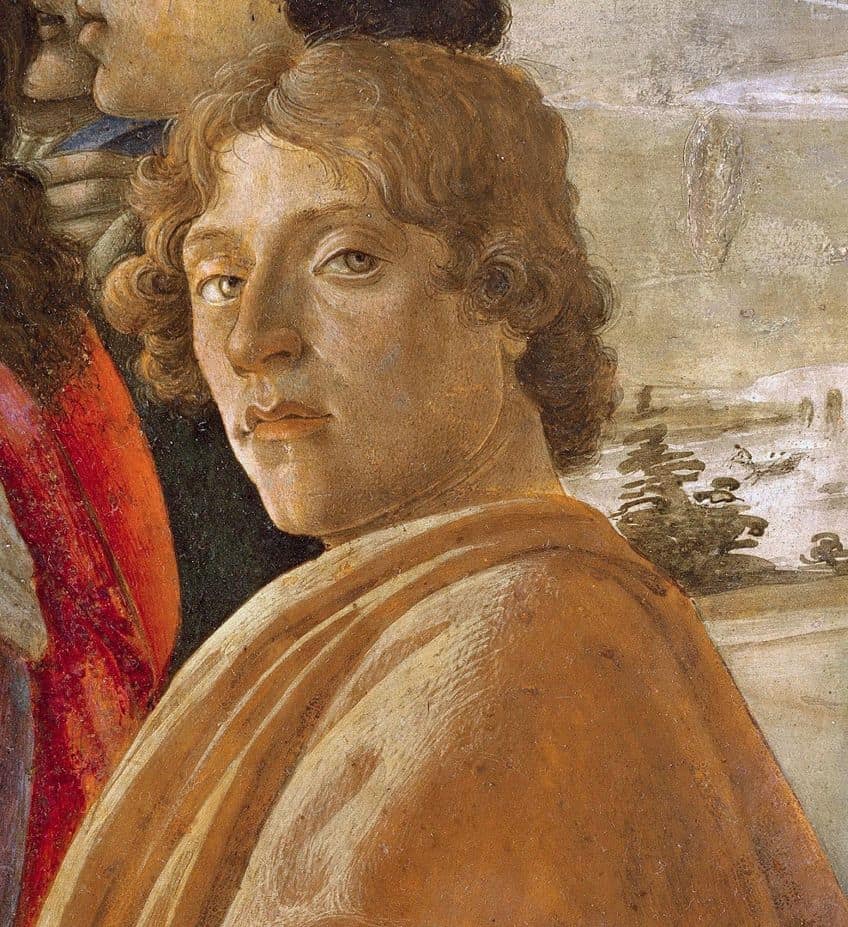
Fortitude (1470)
| Date | 1470 |
| Medium | Tempera |
| Dimensions (cm) | 126 x 64 |
| Where Is It Housed? | Uffizi Gallery, Florence, Italy |
Botticelli’s Fortitude exemplifies the Florentine artist’s early exploration of classical themes and humanistic ideals. The woman’s steadfast gaze and firm posture symbolize moral courage and resilience in the face of adversity.
In doing so, the painting is reflecting the Renaissance fascination with virtue and strength of character.
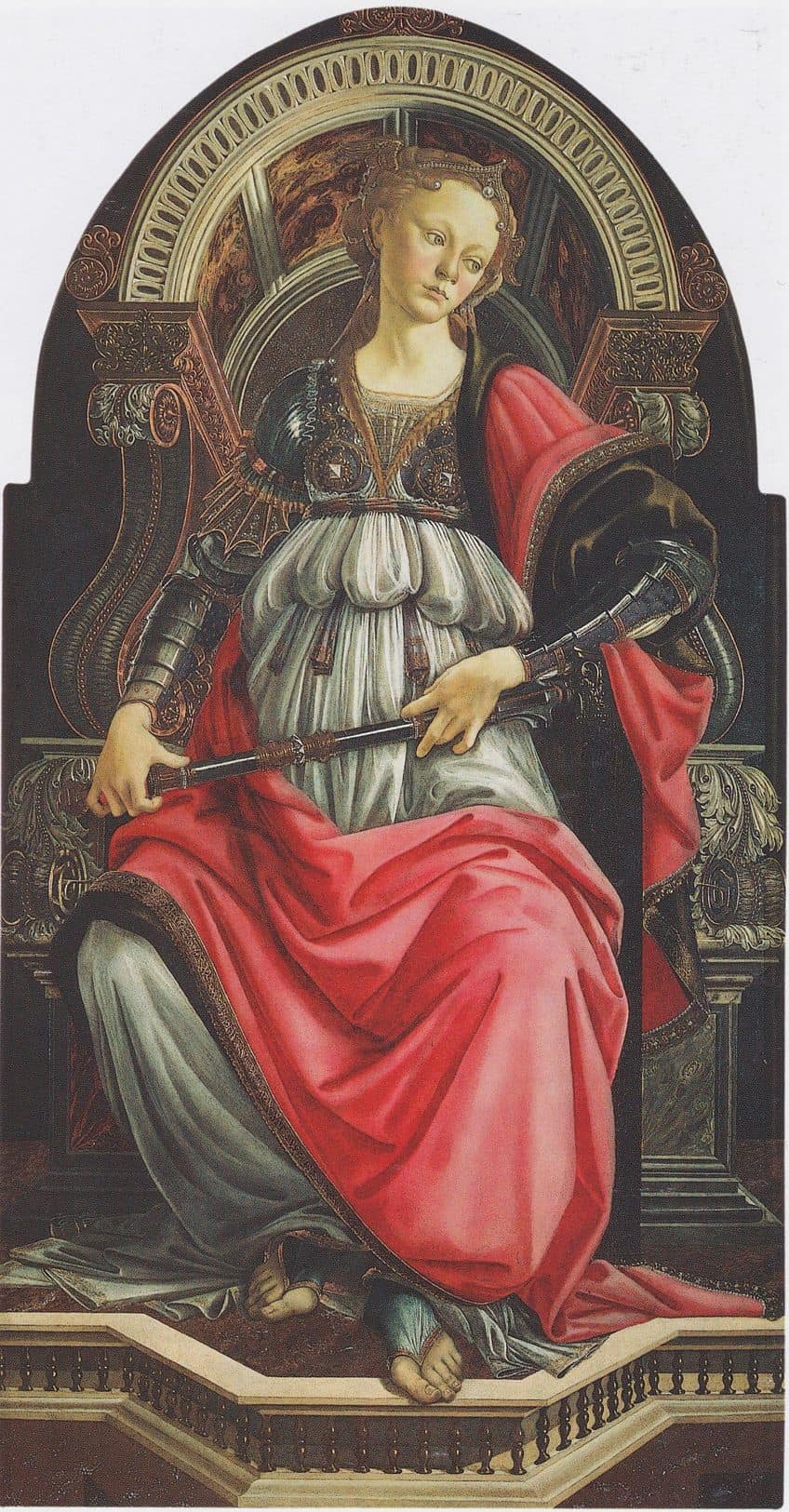
Adoration of the Magi (1475 – 1476)
| Date | 1475 – 1476 |
| Medium | Tempera |
| Dimensions (cm) | 278 x 280 |
| Where Is It Housed? | Uffizi Gallery, Florence, Italy |
In Adoration of the Magi, Botticelli captures the solemnity and reverence of the biblical scene, portraying the Magi’s homage to the infant Jesus with rich symbolism and intricate detail. The composition reflects Botticelli’s skill in creating a sense of awe and wonder.
It invites viewers to contemplate the divine mystery of Christ’s birth.

Primavera (c. 1477 – 1480)
| Date | c. 1477 – 1480 |
| Medium | Tempera |
| Dimensions (cm) | 203 x 314 |
| Where Is It Housed? | Uffizi Gallery, Florence, Italy |
Botticelli’s Primavera is a rich tapestry of mythological narratives and allegorical symbolism, celebrating the arrival of spring and the renewal of life. The painting’s intricate composition and vibrant colors evoke a sense of harmony and beauty.
Botticelli invites viewers to explore its layers of meaning and interpretation.
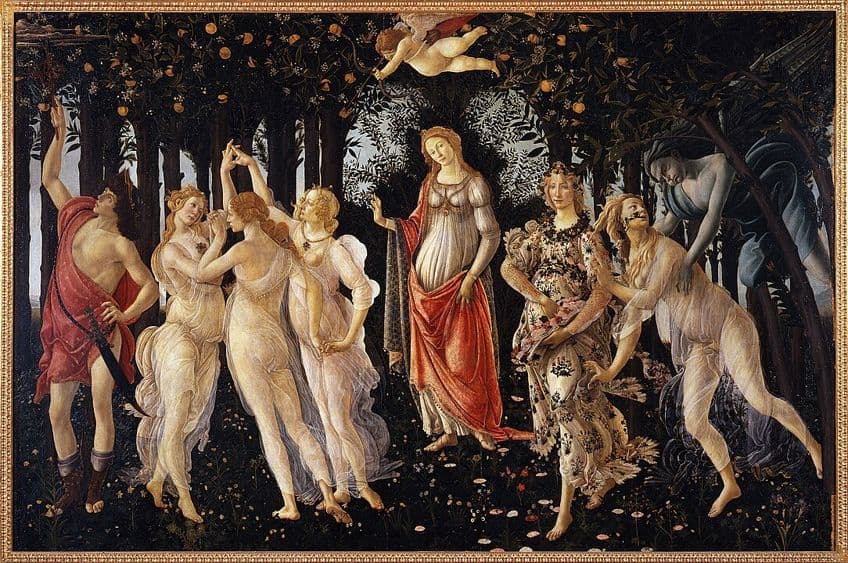
Saint Augustine in His Study (c. 1480)
| Date | c. 1480 |
| Medium | Tempera |
| Dimensions (cm) | 118 x 118 |
| Where Is It Housed? | Church of Ognissanti, Florence, Italy |
Botticelli’s depiction of Saint Augustine in his study conveys the saint’s intellectual pursuits and spiritual contemplation with sensitivity and depth. Through meticulous details and thoughtful composition, Botticelli invites viewers to reflect on the intersection of faith and reason.
It embodies the humanist ideals of the Renaissance.

Pallas and the Centaur (1482)
| Date | 1482 |
| Medium | Tempera |
| Dimensions (cm) | 207 x 148 |
| Where Is It Housed? | Uffizi Gallery, Florence, Italy |
Pallas and the Centaur reflects Botticelli’s fascination with classical mythology and his exploration of the human psyche. Through the contrast between the serene figure of Pallas Athena and the wild centaur, Botticelli explores themes of reason and restraint.
It invites viewers to contemplate the eternal struggle between civilization and chaos.

Madonna of the Magnificat (1483)
| Date | 1483 |
| Medium | Tempera |
| Dimensions (cm) | 118 x 119 |
| Where Is It Housed? | Uffizi Gallery, Florence, Italy |
Madonna of the Magnificat showcases Botticelli’s mastery of composition and symbolism, portraying the Virgin Mary in a moment of profound reverence and devotion. The painting’s delicate brushwork and intricate details convey a sense of grace and serenity.
It invites viewers to contemplate the significance of the Magnificat and the Virgin’s role in salvation history.

The Annunciation (c. 1485)
| Date | c. 1485 |
| Medium | Tempera |
| Dimensions (cm) | 49.5 x 58.5 |
| Where Is It Housed? | Kelvingrove Art Gallery and Museum, Glasgow, Scotland |
In The Annunciation, Botticelli depicts the sacred moment of revelation with delicacy and reverence, capturing the Virgin Mary’s awe and humility in the presence of the angel Gabriel.
The painting’s serene atmosphere and subtle symbolism invite viewers to contemplate the mystery of the Incarnation and the Virgin’s role in God’s plan for redemption.

The Birth of Venus (c. 1485 – 1486)
| Date | c. 1485 – 1486 |
| Medium | Tempera |
| Dimensions (cm) | 172.5 x 278.5 |
| Where Is It Housed? | Uffizi Gallery, Florence, Italy |
Botticelli’s The Birth of Venus is an iconic masterpiece that embodies the ideals of beauty and love in Renaissance art. The painting’s graceful composition and ethereal atmosphere capture the mythological birth of the goddess Venus with timeless elegance.
It symbolizes the divine origins of beauty and the power of artistic creation.

The Virgin and Child with Saint John and an Angel (c. 1490)
| Date | c. 1490 |
| Medium | Tempera |
| Dimensions (cm) | 115 x 70 |
| Where Is It Housed? | National Gallery, London, England |
The Virgin and Child with Saint John and an Angel radiates maternal tenderness and divine grace, portraying the Virgin Mary and the Christ Child with warmth and intimacy.
Botticelli’s sensitive portrayal of the sacred bond between mother and child invites viewers into a world of spiritual contemplation and devotion.
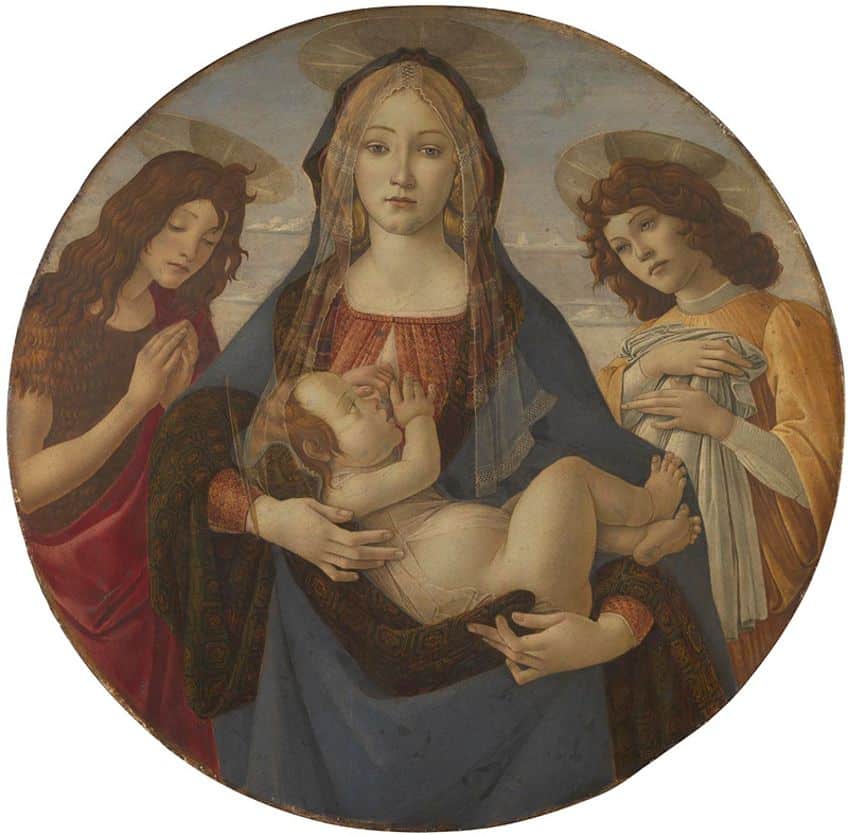
The Mystical Nativity (c. 1500 – 1501)
| Date | c. 1500 – 1501 |
| Medium | Tempera |
| Dimensions (cm) | 108.5 x 74.9 |
| Where Is It Housed? | National Gallery, London, England |
The Mystical Nativity is a visionary masterpiece that combines religious devotion with mystical symbolism, portraying the Nativity scene with a sense of wonder and awe. Botticelli’s use of vibrant colors and symbolic imagery invites viewers to explore the deeper meaning of Christ’s birth and the promise of salvation, echoing the spiritual aspirations of the Renaissance era.

Sandro Botticelli’s top paintings epitomize his artistic brilliance and enduring legacy. Through profound symbolism and captivating storytelling, Botticelli’s works invite contemplation of the human condition and the essence of beauty. His creations persist in evoking inspiration and enchanting global audiences, thereby etching an unforgettable legacy in the annals of art history and our shared consciousness.
Frequently Asked Questions
Why Is Botticelli Significant in the Renaissance?
Botticelli’s innovative use of perspective and exploration of classical themes, as seen in works like The Birth of Venus and Primavera, exemplify Renaissance ideals of humanism and beauty, cementing his pivotal role in the cultural reawakening of Europe. His ability to infuse mythological narratives with allegorical depth continues to captivate audiences, making his works enduring symbols of Renaissance artistry.
How Many Paintings Did Botticelli Produce During His Lifetime?
Sandro Botticelli’s exact output is not precisely known, but art historians estimate that he created around 100 paintings. However, this number may vary depending on attributions and discoveries. Despite his relatively small body of surviving work compared to some of his contemporaries, Botticelli’s impact on Renaissance art remains profound and enduring.
Isabella studied at the University of Cape Town in South Africa and graduated with a Bachelor of Arts majoring in English Literature & Language and Psychology. Throughout her undergraduate years, she took Art History as an additional subject and absolutely loved it. Building on from her art history knowledge that began in high school, art has always been a particular area of fascination for her. From learning about artworks previously unknown to her, or sharpening her existing understanding of specific works, the ability to continue learning within this interesting sphere excites her greatly.
Her focal points of interest in art history encompass profiling specific artists and art movements, as it is these areas where she is able to really dig deep into the rich narrative of the art world. Additionally, she particularly enjoys exploring the different artistic styles of the 20th century, as well as the important impact that female artists have had on the development of art history.
Learn more about Isabella Meyer and the Art in Context Team.
Cite this Article
Isabella, Meyer, “Sandro Botticelli Paintings – The Famous Renaissance Artist.” Art in Context. February 13, 2024. URL: https://artincontext.org/sandro-botticelli-paintings/
Meyer, I. (2024, 13 February). Sandro Botticelli Paintings – The Famous Renaissance Artist. Art in Context. https://artincontext.org/sandro-botticelli-paintings/
Meyer, Isabella. “Sandro Botticelli Paintings – The Famous Renaissance Artist.” Art in Context, February 13, 2024. https://artincontext.org/sandro-botticelli-paintings/.


